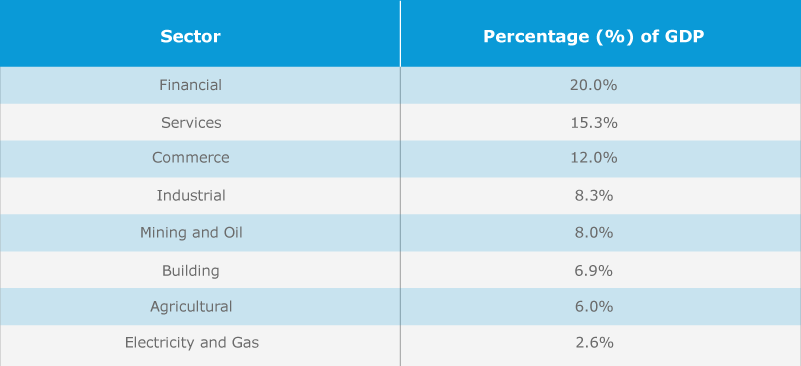Environment and projections
Colombia in 2020, with high levels of labor informality and a very poor distribution of
income (Gini index: 0.49 – measurement parameter of inequality between rich and poor)
The growing number of formal unemployment is added, which reached 21.4% at the
National level in the month of May 2020.
Faced with this complex problem, what is expected to be the behavior in the forward
evolution of unemployment and which professional or technological programs have a
better perspective?
According to the projections of the OECD (Organization for Economic Cooperation and
Development) Colombia will be the worst-off country at the end of 2021 within its 37
member countries in terms of unemployment, it forecasts 21.1% for December 2020, with
12.7% above the average of the countries evaluated. See table 1.
The situation varies and impacts differently in the 3 types of economic sectors such as the
agricultural sector (primary), the industrial sector (secondary) and the service provision
sector (tertiary).
According to economic activity, from the three sectors mentioned, there are a total of
nine, including: the transport sector, the financial sector, the commercial sector, the
construction sector, the mining and energy sector and the communications sector.
The contributions to GDP (Gross Domestic Product) in descending order are broken down
as follows:

New work schemes
The generation of employment then gravitates mainly in the 4 axis sectors of the
economy, such as Finance, services, commerce and construction, which demand skilled
labor in the first 2 and less qualified in the second 2.
On the other hand, operational jobs in these sectors have been systematically suppressed
by the entry of the digital world and robotics in several of the aforementioned sectors.
This is how many of the non-specialized technical positions are and will continue to be
replaced by new technologies that do not have human error, are more efficient and
generate less costs in the medium and long term. However, all the activities of strategic
planning, definition of business lines, market intelligence, development and investment
management will hardly be replaced by robotics and by the new virtual and agile work
schemes.
Ways out
The great challenge to remain in the market requires techniques and decisions to unlearn
obsolete models and systems and have a total openness to change and to new models of
teamwork and remote work.
It is when the redefinitions of behavioral competencies come into play and the attitude of
adopting disruptive models and cultures make a career.
Education must then also evaluate its teaching models and academic programs must be
rethought to blended and virtual models, including leading programs in the market and
with greater options in the world of work such as data scientists, robotics specialists, nano
electronics, big data and virtual reality.
Welcome to the new work models and the virtual world
Carlos Mosquera Franco
RPT CONSULTANTS
